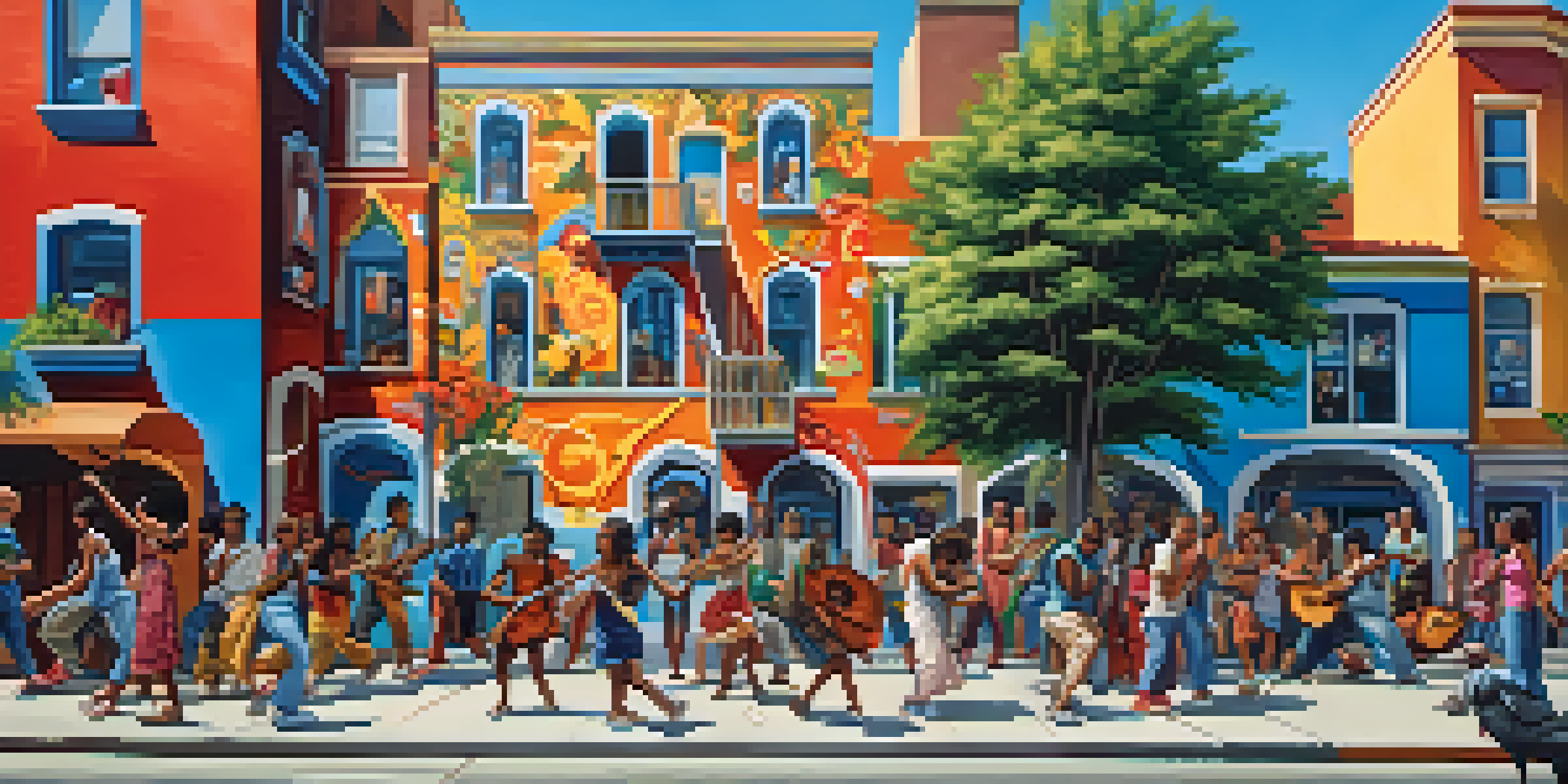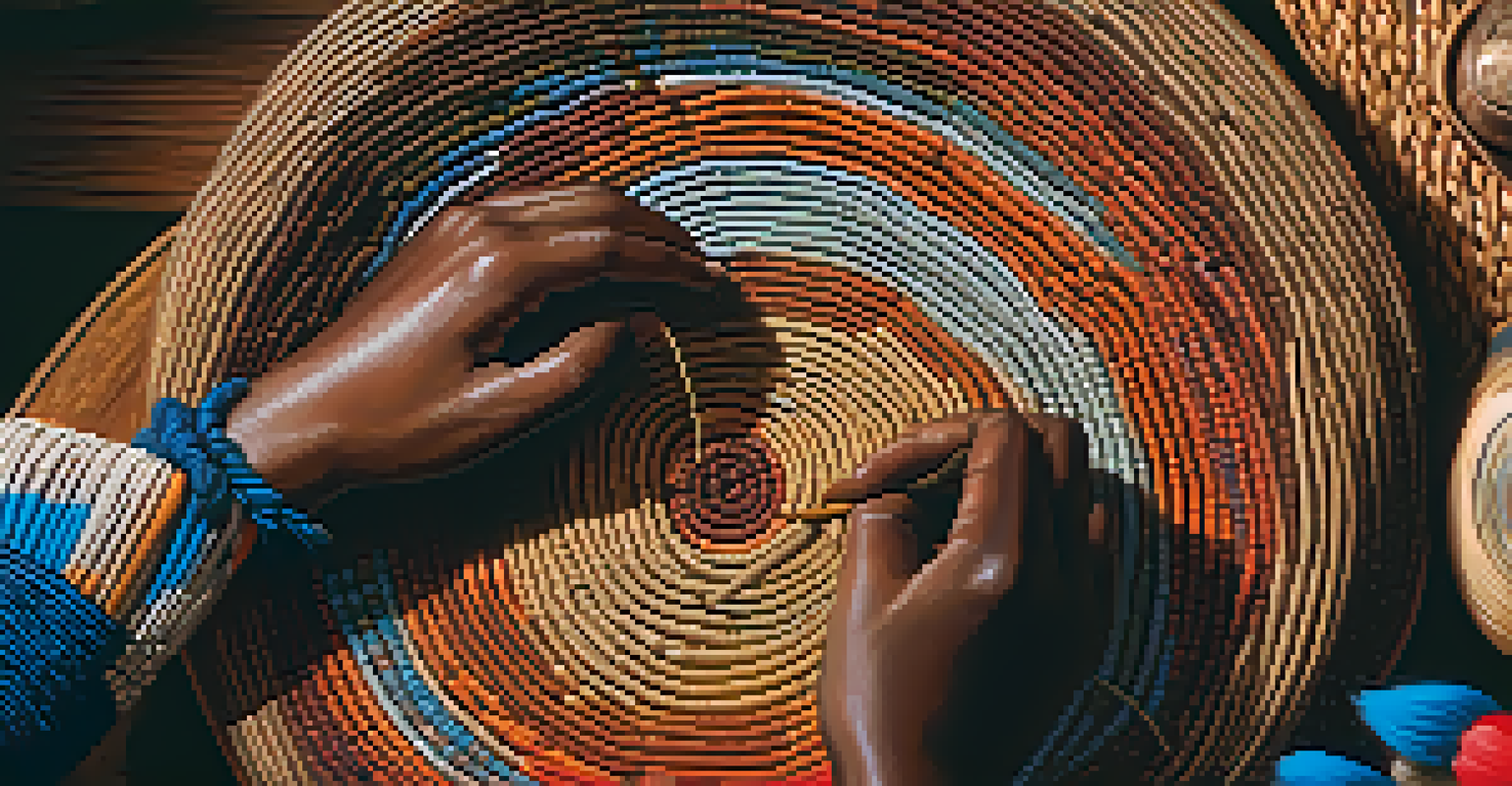Cultural Heritage and Politics: Art as Identity and Resistance

Understanding Cultural Heritage: A Foundation of Identity
Cultural heritage encompasses the traditions, customs, and artistic expressions that define a community. It serves as a repository of identity, reflecting the values and beliefs that shape a society. By preserving this heritage, communities can maintain a sense of continuity and belonging, which is crucial in an ever-changing world.
Art is the most beautiful of all lies; it is the most beautiful of all truths.
Art plays a vital role in this preservation, acting as a form of communication that transcends language barriers. Whether through music, visual arts, or literature, these expressions encapsulate the essence of cultural narratives. They offer insights into the struggles and triumphs of a people, making the past relevant to contemporary audiences.
Moreover, cultural heritage fosters pride and unity among community members. When individuals engage with their heritage through artistic practices, they not only honor their ancestors but also strengthen their identity. This collective memory is essential for resisting external pressures that threaten to dilute or erase cultural uniqueness.
Political Context: Art as a Tool for Social Change
Art has long been recognized as a powerful instrument for political expression and social change. Throughout history, artists have used their work to challenge authority, question societal norms, and provoke thought among the masses. This dynamic relationship between art and politics underscores the potential of creativity to influence public opinion and inspire action.

For instance, during times of oppression, artists often become the voice of the voiceless, using their platforms to highlight injustices. Movements like the Harlem Renaissance and the Mexican Muralism demonstrated how art could reflect societal struggles and aspirations for equality. These artistic movements not only captured the zeitgeist of their times but also galvanized communities towards collective action.
Cultural Heritage Defines Identity
Cultural heritage serves as a foundation of identity, reflecting community values and fostering a sense of belonging.
In this way, art becomes a form of resistance, allowing marginalized voices to assert their existence and demand recognition. It can challenge dominant narratives and offer alternative perspectives that resonate on a personal level, fostering empathy and understanding across diverse audiences.
Identity Formation: The Role of Artistic Expression
Artistic expression is integral to identity formation, serving as a means for individuals to explore and convey their unique experiences. Through creation, artists articulate their personal and cultural narratives, thus contributing to a broader understanding of their community's identity. This exploration is particularly significant in multicultural societies, where diverse identities intersect.
Cultural heritage is the foundation of our identity, and identity is the foundation of our future.
By engaging in artistic practices, individuals can reclaim their narratives and challenge stereotypes that may exist about their culture. For example, contemporary artists often draw upon traditional motifs while incorporating modern themes, creating a dialogue between past and present. This fusion not only honors cultural heritage but also redefines it in a contemporary context.
As audiences engage with these artworks, they gain insight into the complexities of identity, fostering a greater appreciation for the diversity of human experience. This process of recognition and validation is vital for individuals who seek to understand their place in a global society.
The Impact of Globalization on Cultural Heritage
Globalization has significantly influenced cultural heritage, bringing both opportunities and challenges. On one hand, it allows for the exchange of ideas and artistic practices across borders, enriching cultural expressions. Artists can now reach global audiences, promoting cultural diversity and fostering appreciation for different traditions.
However, globalization also poses risks to the preservation of local identities. As dominant cultures spread through media and technology, smaller, indigenous cultures may struggle to maintain their distinctiveness. This phenomenon can lead to cultural homogenization, where unique traditions are diluted or lost altogether.
Art as a Catalyst for Change
Art has historically been a powerful tool for social change, allowing marginalized voices to challenge authority and inspire collective action.
To combat this, many artists and activists are advocating for the protection of cultural heritage. By emphasizing the importance of local narratives and practices, they seek to ensure that diverse identities continue to thrive in a globalized world. This balance between embracing global influences and preserving local heritage is crucial for the sustainability of cultural identities.
Art as Resistance: Historical Perspectives
Throughout history, art has served as a form of resistance against oppressive regimes and societal injustices. From the anti-war movements of the 1960s to the civil rights movement, artists have used their work to challenge dominant narratives and rally support for social change. This historical context illustrates the enduring relationship between art and activism.
For instance, artists like Pablo Picasso and Diego Rivera utilized their platforms to address political issues, creating works that resonated with the struggles of their time. Their art not only documented historical events but also inspired collective action, demonstrating the potential of creativity to effect change.
Today, this legacy continues as contemporary artists engage with current social issues, from climate change to racial justice. By drawing upon historical examples, they remind us of the power of art as a catalyst for resistance and transformation, urging us to reflect on our own roles in shaping society.
Contemporary Artists: Voices of Resistance and Identity
Contemporary artists around the globe are increasingly using their work as a means of resistance and expression of identity. From graffiti artists in urban environments to digital creators harnessing social media, these artists are addressing pressing social issues in innovative ways. Their work challenges viewers to engage with complex topics and consider their impact on society.
For example, artists like Ai Weiwei have gained international recognition for their activism, using art to critique governmental policies and advocate for human rights. Similarly, Indigenous artists are reclaiming their narratives through contemporary mediums, blending traditional techniques with modern themes to highlight their cultural resilience.
Globalization's Dual Impact
While globalization promotes cultural exchange, it also threatens local identities, necessitating efforts to preserve diverse cultural narratives.
These artists not only amplify marginalized voices but also encourage dialogue and reflection among diverse audiences. By engaging with their work, viewers are invited to confront their own beliefs and assumptions, fostering a deeper understanding of identity and resistance in today's world.
The Future of Cultural Heritage and Political Art
As we move forward, the relationship between cultural heritage and political art will continue to evolve. The rise of digital technologies offers new avenues for artistic expression, allowing artists to reach wider audiences and engage in global conversations. Social media platforms have become powerful tools for activism, enabling artists to share their messages instantaneously.
However, this digital shift also presents challenges, such as the risk of oversimplification of complex issues. As art becomes more accessible, it is essential for artists to maintain the depth and nuance of their messages. Balancing engagement with authenticity will be crucial in ensuring that political art remains impactful.

Ultimately, the future of cultural heritage and political art lies in the hands of both artists and audiences. By valuing diverse perspectives and supporting artistic endeavors, we can foster a rich cultural landscape that honors heritage while advocating for social justice. This collaborative effort will be essential in shaping a more equitable world.